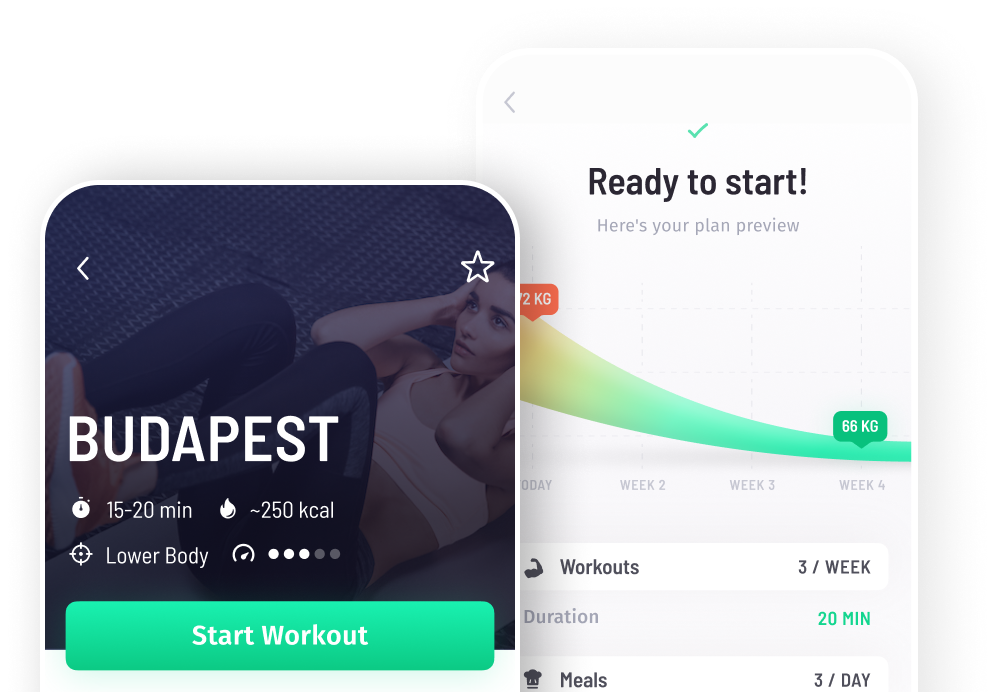You have most likely heard someone talking about HIIT at the gym or came across it during an online search for workouts, and you probably asked yourself “what is HIIT?”
HIIT has become increasingly popular, as more people are looking for effective workouts that they can fit into their lifestyle. We have all had that classic workout thought process at some point or another: ‘Can I realistically fit this into my day?’ or ‘I need X amount of time to get to the gym, X amount of time to workout, X amount of time to clean up, and X amount of time to get home. I just don’t have the time’.
HIIT gives you the flexibility to be active and get healthy when and where you can, all tied up in an efficient and effective workout. So, what does HIIT mean? When talking about HIIT workout, a definition is a must. Let’s go on to find out.
What is HIIT workout and what does HIIT mean
Let’s define HIIT first. High Intensity Interval Training, or HIIT, is a type of workout that consists of short periods of intense exercise that get your heart rate up quickly between intervals of less intense exercise or complete rest. It is more exhaustive than traditional workouts and requires longer recovery periods in between, in terms of both rests between intervals and the workouts themselves.
How does HIIT work?
Typically, a HIIT workout will last anywhere from 10 to 30 minutes, should be done at a maximum of 1-3 days per week, and can be completed with or without equipment. You have the flexibility to choose which activity to do, including: sprinting, swimming, biking, group fitness classes, jump roping or doing body weight exercises. The intensity level of the activity you choose will determine the duration of the activity as well as the length of the recovery period.
An example of a HIIT workout that you can do anywhere, without machines is a ‘walk and sprint’. For beginners, start out with a 30 second walk, and then sprint for 30 seconds. Repeat for about 8-10 times and that’s your workout. The further you progress, the more you can repeat the rounds or complete it on an incline.
Now that we gave you the HIIT definition, keep reading to find out the benefits of this kind of training and why HIIT works.
What are the benefits of HIIT?
Benefits of exercise in general include: increased energy levels, improved sleep quality, happier state of being, reduced heart rate and blood pressure, reduced risk of chronic disease, reduced blood sugar and insulin resistance, and improved health overall.
HIIT in particular is an effective workout for those who want to get active and healthy, but don’t have the time in their schedule for lengthy workouts. It is an effective time saver and workout.
HIIT also has a number of unique benefits, such as:
You can do a HIIT workout anywhere
 You can do a HIIT workout on the go while traveling, or when you are simply pinched for time and space. Plus, if you don’t particularly enjoy going to the gym, whether it be for the cost, comfort level you have there or something else, a HIIT workout gives you the flexibility to get an effective workout in a place of your choosing.
You can do a HIIT workout on the go while traveling, or when you are simply pinched for time and space. Plus, if you don’t particularly enjoy going to the gym, whether it be for the cost, comfort level you have there or something else, a HIIT workout gives you the flexibility to get an effective workout in a place of your choosing.
You can fit a HIIT workout into your day
Since most HIIT workouts take 10-30 minutes to complete, it is much easier to fit into your day. You just might be more motivated to get it done and less inclined to use the excuse of time knowing that it will be done much quicker than a traditional workout.
You can adapt HIIT to your fitness level and medical conditions
Since HIIT can be low impact up to high impact, you can adapt and modify your workout. As you progress in your fitness level, you can add in more repetitions, utilize weights to increase difficulty, or add in some new exercises.
Why High Intensity Interval Training works?
You can increase your anaerobic capacity and aerobic capacity
Your anaerobic capacity is the extra work your body can do even when not receiving enough oxygen. Your aerobic capacity refers to the ability of your heart and lungs to get oxygen to your muscles. Paced jogging, a traditional form of exercising, compared to a HIIT workout, for example, increases only your aerobic capacity. For your total health, you want to increase both your anaerobic capacity and your aerobic capacity, making a HIIT workout an effective one to do so.
You can burn more calories and elevate your metabolic rate
You can burn more calories during a HIIT workout than a traditional one, or burn the same amount in less time. Due to HIIT’s ability to elevate your metabolic rate for hours after you exercise, you also burn calories after you exercise.
You can burn fat even after you complete your HIIT workout
You burn fat 9 times faster after a HIIT workout due to your increased oxygen consumption. It was traditionally thought that only long sessions at a steady rate were required to improve oxygen consumption, which is your muscles’ ability to use oxygen. Since you also boost your metabolism during a workout, you can burn more fat than you would with a standard cardio workout.
HIIT workouts can reduce total fat, and increase fat free mass and aerobic power. One study found significant changes in people performing high-intensity intermittent exercise three times per week, 20 min per session, for 12 weeks – without dietary changes. For the intervention (exercising) group, aerobic power improved, significant weight loss of 1.5 kg was experienced, total fat mass of 2 kg was reduced, and there was a 17% of reduction in visceral fat. By week 6, waist circumference was significantly decreased.
As with any new program or exercise regime, if you want to get started with High Intensity Interval Training, consult with your doctor before getting started. You’ll want to be absolutely sure that it is safe for you.
Did you enjoy this article? Share it!
Related Articles
At some point, you have most likely seen a green smoothie and thought to yourself ‘no way could that actually taste good’. But a healthy…
Trying out healthy juice recipes to lose weight? Add too many fruits, and your juice becomes more harm than good. Add too many veggies, and…
For those who have ever thought about protein shakes, know that you are not alone in this. There are tons of people who try protein shakes…

